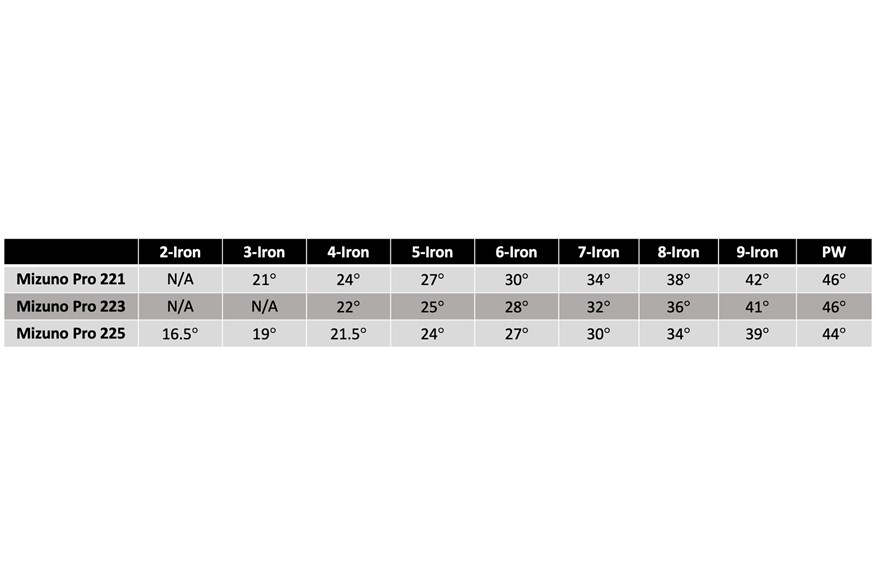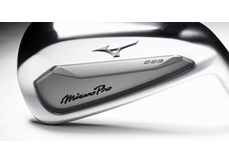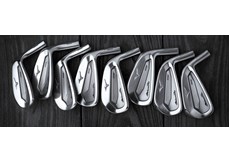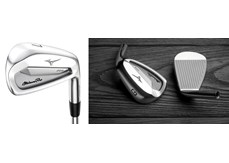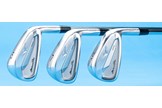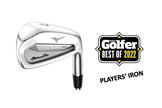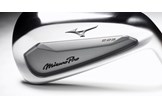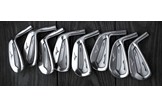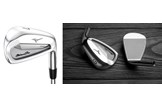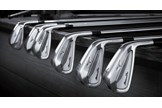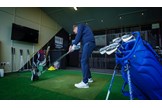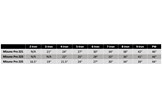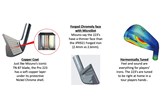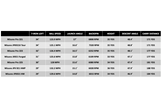Mizuno Pro 223 Iron Review
Last updated:
-
At a glance
- TG Rating
- Owner Rating
What we say...
The Mizuno Pro 223 iron is a forged, tour size, cavity back with fast chromoly face, the model is designed to feel at home in tour players’ hands.
Mizuno are a fast-changing brand. The Japanese sporting giants may have over 100 years of heritage to boast about and a reputation for creating some of the best golf irons but they’ve never seen such fast-paced growth or increased levels of interest in their products as over the last five years.
In the last half-a-decade Mizuno’s US sales have risen from $35 to $85 million and Google searches for Mizuno drivers are now greater than when they sponsored the World No.1 men’s and ladies’ players (Luke Donald and Stacy Lewis), back in 2011.
Mizuno reckon the average age of customers has dropped from 46 to 41 years old and that’s been achieved without splashing out on multi-million-dollar tour players to play their clubs. Essentially, since the brand has taken making a great driver seriously (the ST family), and because of a new focus on young online and social media savvy golfers, perceptions are shifting and the brand’s fortunes have taken a serious uptick. So much so Mizuno now feel free from working in the crevices left by golf’s other major brands.
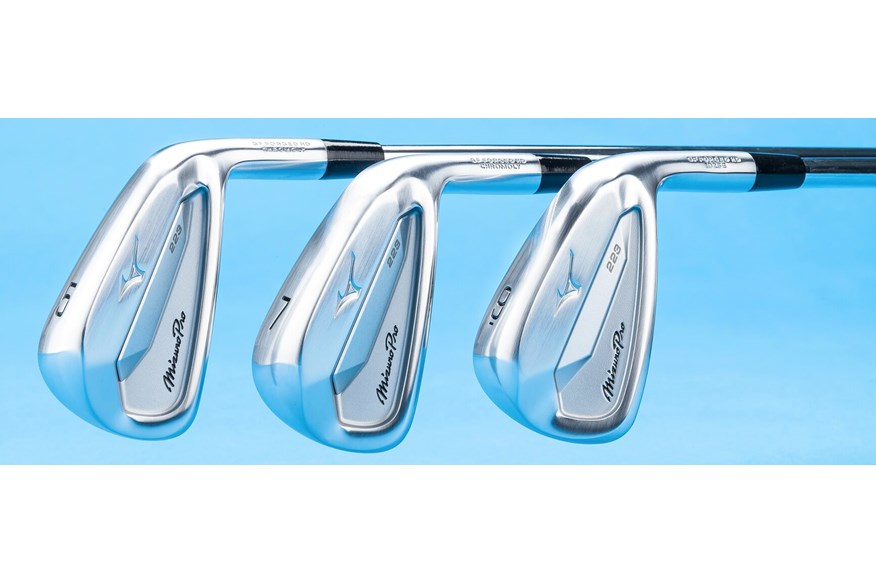
Mizuno say they’re seeing more 25+ year olds flood into the game than ever, and the younger generation are happily buying into Mizuno through the bag. The young blood don’t come with preconceived ideas and are much more willing to take things at face value. It means modern Mizuno fans have no memory of which brands historically were strong at drivers, forged irons or putters, which is part of the reason driver and putter sales are soaring.
Mizuno reckon they’ve come so far they’re now happy to let go of their predominantly forged iron history. Dave Matthews, Western Global Brand Marketing Manager, said: “History has gone and it’s not coming back, our past is not our future”.
Yes, 13 of the previous 24 World No.1 players have played Mizuno at some point in their careers, but focus has now switched to creating a farm of young talent on tour and using YouTuber Garrett Clark (515K subscribers) to create content that speaks direct to their new younger audience.
RELATED: Best Players’ Irons
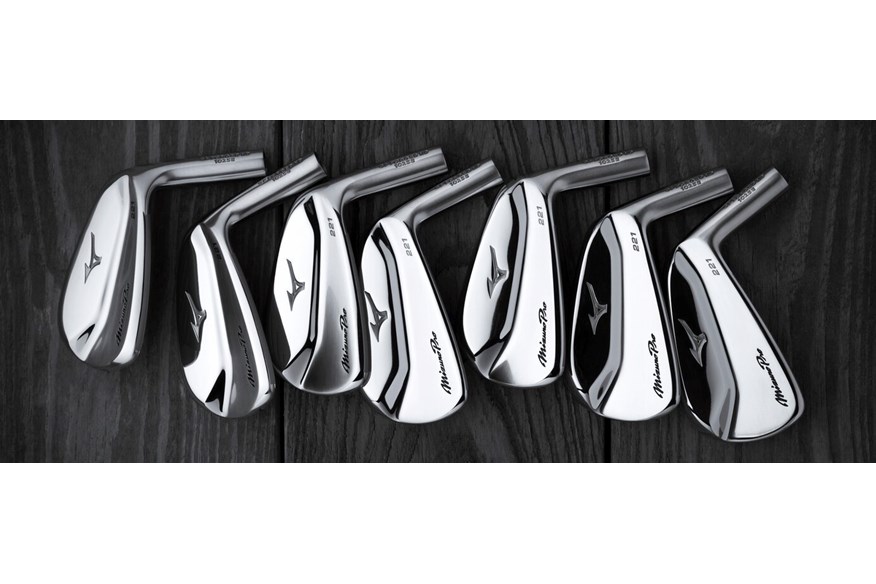
With a such fresh new ideas driving the company, the timing couldn’t be more perfect to break with tradition and bring, for the first time ever, Mizuno Pro irons to the western world. Here’s what you need to know about them.
Why Mizuno Pro and not TP or MP?
Until now Mizuno Pro irons have been reserved exclusively for the Japanese market. Japanese golfers put a super-premium on high quality materials and outstanding craftmanship, so the suits at Mizuno naturally felt the need to reserve a high level of exclusivity to the forged irons sold to their Japanese audience.
That sort of thinking has meant that over the last few decades in the western world we’ve become accustomed to first Mizuno TP irons, before the Mizuno MP irons became the forged iron choice for traditionalists and shot shapers.
But Mizuno is a rapidly changing business. Focus has shifted to attracting and maintaining the attention of a younger more connected/online audience and, because sales are on a steep upward trajectory, protectionist thinking has been consigned to the past.
For 2022 Mizuno are going global with the new Mizuno Pro 221, 223 and 225 irons.
WATCH: Best 2022 Players’ Iron video
At a glance: Mizuno Pro 223 irons
RRP: £180 per club
Availability: 4-PW
Stock shaft: Choose from 16 premium options
7-iron loft: 32°
Forgiveness rating: 2 (Players’ Iron)
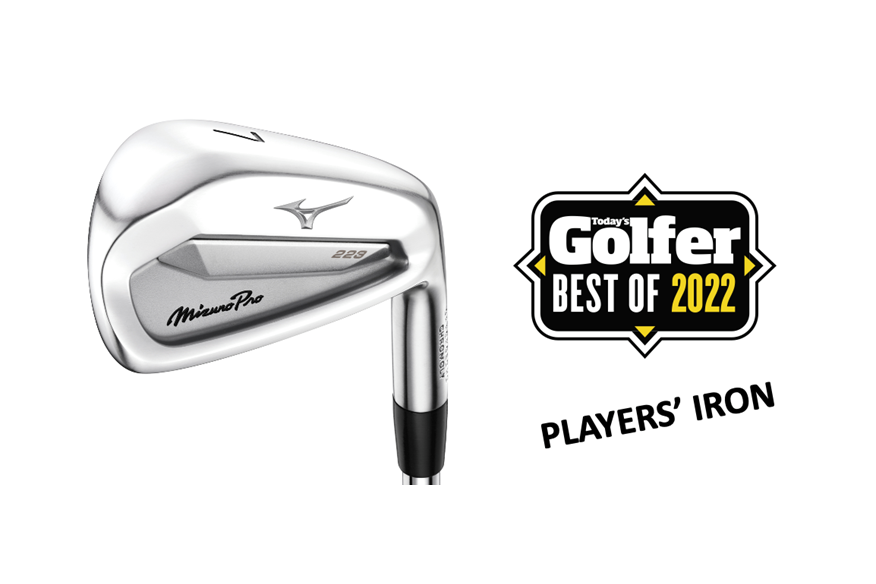
Looking to buy a Mizuno Pro 223 Iron?
The right iron can make all the difference to your game! Check out our best golf irons buying guide to help you find the perfect club.
Ready to buy now? Here are some of the best places to look for deals on Mizuno Pro 223 Irons
UK Deals
- View deals on eBay
- View deals on Golfbidder
US Deals
- View deals on eBay
- View deals on Golfavenue
Mizuno’s MP players cavity back irons have gone through several different guises over past generations, from the shallow split-cavity MP-18 SC in 2018 to the multi-material MP-20 MMC in 2020. But Mizuno say the new 223 is the most evolved iron of the Pro family.
The Pro 223 heads are smaller than the previous MP-20 MMC, yet thanks to a chromoly face (which wasn’t in previous generation) and new Microslot (behind the face of the 4-7 irons) the iron is hotter than the extremely popular Mizuno JPX921 Forged, which is much more of a players distance iron.
Think of the Pro 223 as a compact players iron (it’s sized to fit the eye of tour players) that offers additional ball speed over what you might expect, which sounds like a potent combination, and you really won’t be too far off the mark. It secured a spot among our pick of the best players’ irons in our irons test.
RELATED: Jump to our Mizuno Pro 225 iron review
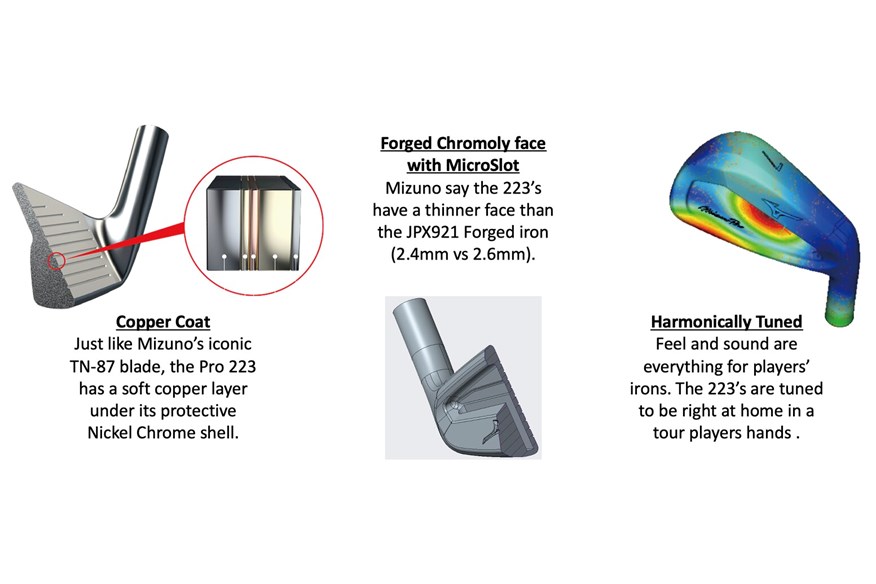
Mizuno on the Pro 223 irons
The elite Players Cavity. The Mizuno Pro 223 delivers everything tour players need to compete on extended, more demanding layouts – but never thought to ask for. The 223’s conceal a ball speed-enhancing construction within the frame of a compact players cavity.
A completely new technology platform from 4-7 iron combines Mizuno’s Chromoly Forging and Flow Micro-Slot – an innovation producing extreme ball speeds from a small tour-ready profile. It delivers a face thickness of just 2.4mm (vs 2.6mm JPX921 Forged). From 8-PW, Pro 223 are constructed from 1025E Pure Select Mild Carbon Steel for ultimate precision and control.
RELATED: Jump to our full Mizuno M-Craft putter review
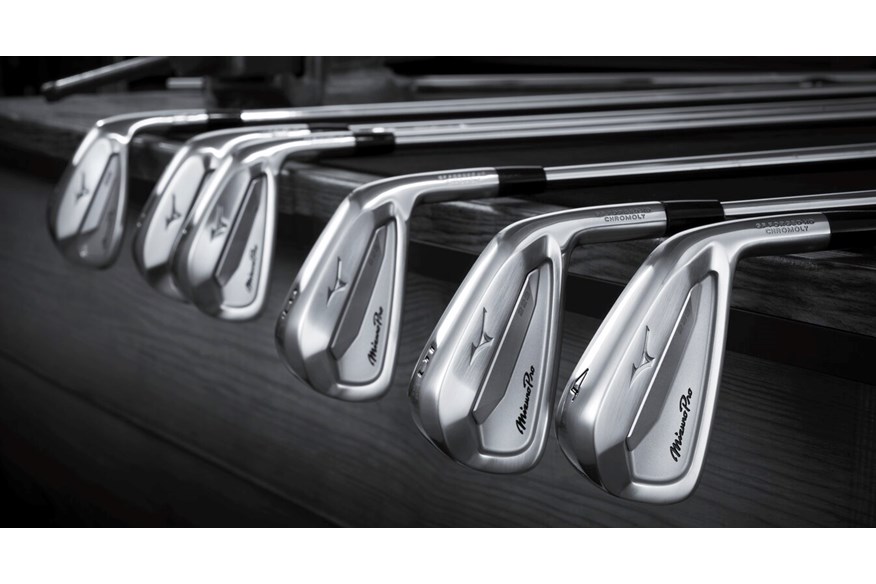
The 223 are Grain Flow Forged in Hiroshima Japan with a soft copper underlay for the purest, softest Mizuno feel at impact.
“The good way to look at the new Mizuno Pro 223 is that we shrunk the JPX921 Forged technology platform to the profile of one of our small player’s cavities – comparable to the MP-62, MP-64 or MP-18 SC,” says David Llewellyn, Director of R&D at Mizuno.
“The concept of Mizuno Pro can be misunderstood – we’re not trying to design instant classics or works of art. Mizuno just hides technology incredibly well. This could be perceived as the ultimate betrayal of Mizuno Pro. But the true essence has always been to make history – not be stuck in it,” added Chris Voshall, Product Manager, Mizuno Golf.
RELATED: Which KBS iron shaft suits you?
Watch: Luke Donald tests the new Mizuno Pro 221, 223 and 225 irons
Got a question about the Mizuno Pro 223 iron? Ask us on Twitter.
Verdict: Mizuno Pro 223 irons
Forged tour level and muscle cavity back irons have risen dramatically in popularity over the last couple of years, so much so most brands sponsoring elite tour players now want a compact forged cavity back within their line-up. See the 223 as an alternative to Callaway’s Apex TCB, TaylorMade’s P7MC and Brooks Koepka’s new irons, the Srixon ZX7, and you’ll be pretty much spot on. It’s one of the best players’ irons available.
Our test pro loved the size, shape and feel of the 223’s and the data consistency between shots was absolutely perfect for him. That’s great news for anyone who might be concerned by Mizuno switching this model to a more energetic forged chromoly steel for the first time.
Don’t get too carried away though and fool yourself into thinking the models cavity back makes it a good fit for mid-handicap golfers. Mizuno’s own website lists the Pro 223 as typically being a good fit for 5 – 9 handicappers, which is a very narrow window of players.
Compared to the 221, the 223’s 2° stronger 7-iron (and more lively chromoly head material) produced 2.5 mph more ball speed and 6 yards more carry distance. But we feel more golfers will find themselves choosing between this model and the fast face, hollow body 225.
What’s really important to understand is the stronger lofted 225 (2° in the 7-iron) as expected, produced a 1.6mph faster ball speed and 4 yards more carry distance, but it did that whilst also producing very similar backspin, peak height and descent angle numbers to the 223. So it’s highly likely unless your heart is set on tour level forged cavity backs, the hollow body 225 might well be a better (faster, longer and more forgiving) option.
How Mizuno’s 2022 irons compare in data
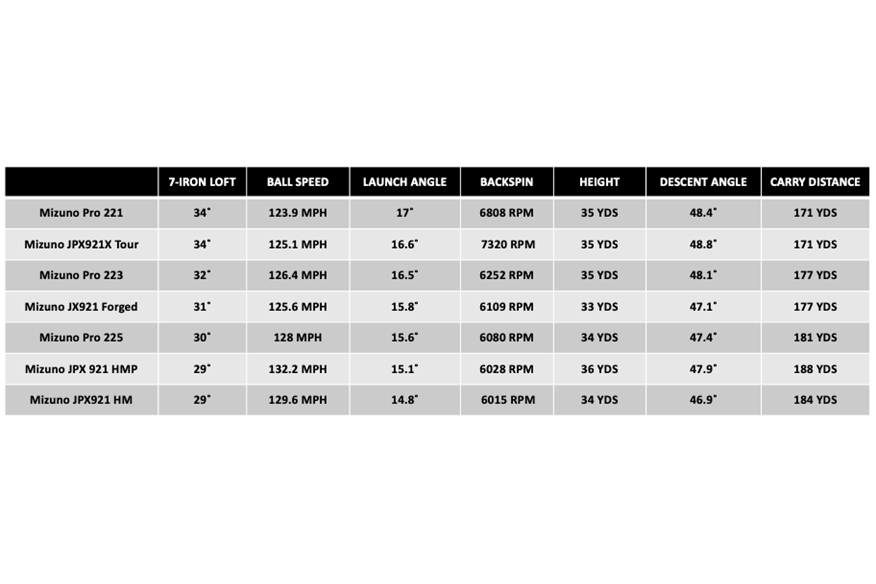
Mizuno Pro 223 vs Pro 221
The 221 is the archetypal muscleback. To be fair to any brand making blades though there’s not too much engineering designers can change before fans start complaining about differences being too extreme and then declining to put them in play. It means changes can be hard to spot for the untrained eye.
What you get with the lovely 221 though is a shape, look and very simple styling that will be just as relevant in 10 years time as it is today, and that’s a theme that runs through all three Pro iron models.
We can’t say our test pro felt too much difference between the Pro’s copper layer (it’s under the chrome finish so you can’t see it) and the JPX921 Tour which doesn’t have the tech, but true feel players would always want any feedback advantage stacked in their favour, so the tech’s a nice addition over competitor products.
Our test pro liked the look of slightly flatter lie angle, which suits very good players eyes. It means there’s the appearance that shots won’t start left of the target, like happens with more offset cavity back irons. Of course the 221 will suit a tiny percentage of golfers. Most club golfers just aren’t reliable enough ball strikers to even entertain putting a set of 221’s in play.
If you happen to be good enough then you won’t give a damn about the 7-iron costing you 2.5 mph of ball speed and 6 yards of carry distance against the 223 or 4.1mph and 10 yards (at a decent swing speed) against the brilliant hollow body 225.
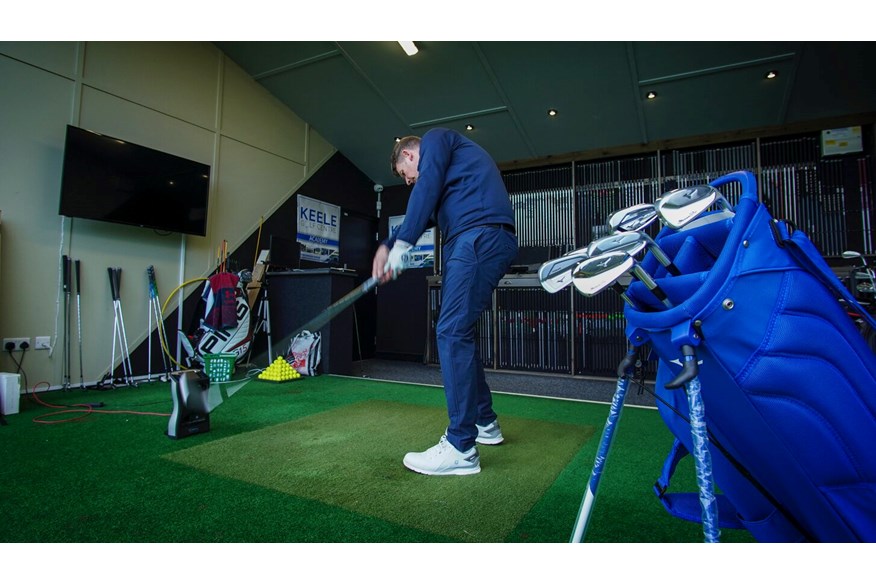
Mizuno Pro 223 vs Pro 225
If combining the looks of a blade with the performance of cavity backs was the original goal for developing hollow body irons, the super sleek 225 absolutely nails the brief. The model is so well styled and proportioned there will be plenty of golfers who don’t even realise it’s not a muscleback blade.
The 225 brings together complex different constructions and materials to get optimal performance across the set, which of course explains the additional cost.
Interestingly Mizuno don’t list the 225 as their best fitting iron for either 5-9 or 10-14 handicappers. Instead they say the model is more forgiving than the 223 but more workable than the JPX921 Forged model. Which inevitably will cause a little confusion around how to choose between the two.
Our data suggests at decent speeds there’s a 2.4mph ball speed and 4 yard carry distance gain in favour of the 225, with spin, height and descent angle remaining almost identical.
For most golfers, so long as you’re happy to stomach the extra £350 (for 7 clubs) for a set, those numbers will swing you towards the 225. For those who don’t want to stretch that far, or players who are still yet to be convinced by the consistency of hollow body irons, then of course the JPX921 Forged will happily step in.
A brilliant, compact players’ distance iron for 2022 and beyond.
Specs: Mizuno Pro 221, 223 and 225 iron lofts
READ NEXT: Which Mizuno iron suits me?
Review written by: Simon Daddow

About the author:
Simon Daddow is the Equipment Editor at TodaysGolfer.co.uk
Simon has worked in the golf industry for 30 years. Starting out as trainee professional at Downes Crediton GC where he learned the art of golf club making, before going onto work for Clubhaus Plc and Tony Charles Ltd as a golf club maker, and running Product Development at Benross Golf.
Joining EMAP Active (now Bauer Media) in 2006 as Equipment Editor, Simon has worked for Today’s Golfer and Golf World magazines and the Today’s Golfer website.
Simon is 46 years old, he’s played golf for 40 years and plays to a handicap of 10.
A lack of club speed means he’s short off the tee, but very handy from 125 yards and in.
Product Information
Mizuno Pro 223 Iron
RRP: £180 per club
Availability: 4 - PW
Stock shafts:
KBS $-Taper Chrome or Black PVD - Mid Trajectory
KBS $-Taper Lite Chrome or Black PVD - Mid/High Trajectory
KBS C-Taper - Mid/Low Trajectory
KBS C-Taper Lite - Mid/High Trajectory
KBS Tour - Mid Trajectory
Nippon N.S. Pro Modus Tour 105 & 120 - Mid Trajectory
Nippon N.S. Pro 950GH - High Trajectory
Nippon N.S. Pro 950GH Neo - High Trajectory
True Temper Dynamic Gold - Low Trajectory
True Temper Dynamic Gold Tour Issue - Low Trajectory
True Temper Dynamic Gold 120 - Low Trajectory
True Temper Dyanmic Gold 105 - Mid/Low Trajectory
Project X LS & LS Blackout - Low Trajectory
Project X - Low Trajectory
Project X 10 - Mid Trajectory
Project X LZ - Mid Trajectory
UST Mamiya Recoil 95 (graphite) - Mid Trajectory
UST Mamiya Recoil ESX (graphite) - High Trajectory
7-iron loft: 32°
Forgiveness rating: 2 (Players' Iron)
Visit the Mizuno website here
